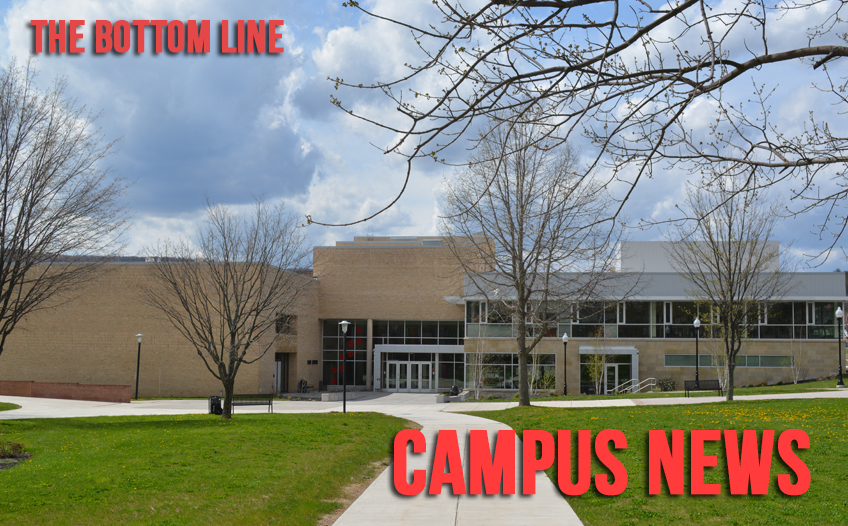President Gibralter Explains Why University Budget Cuts Don’t Affect Construction Projects
Just before the start of the spring semester, a $47 million budget cut was made to the USM (University System of Maryland), $1.25 million of which was cut from Frostburg State University funding, four times the previously quoted $300,000 cut that was expected to impact FSU.
To the woe of every student enrolled in the USM, this resulted in a 2% tuition increase. For all state employees, including FSU faculty and staff, this meant that the 2% Cost Of Living Allowance (COLA) they just received on January 1, 2015 will be taken away on July 1 of this year. In addition, FSU will not be awarding any merit based raises for any faculty and staff.
To many, this may be shocking, especially when considering the recent completion of the CCIT building project, a $71 million endeavor, the Lane Center renovation project that was completed in 2009, which amounted to over $21 million, and a $4.8 million renovation to Bobcat Stadium.
Based on these major projects, one might assume that financially, all is well.
Why then, if the state has the money to fund these projects, are students and faculty at the receiving end of these crippling budget cuts?
FSU’s president, Jonathan Gibralter, had the answer to this question:
“I think the important thing for people to understand is that there are difficult sources of funds. The money for the CCIT building comes from the State of Maryland issuing a bond and Frostburg State getting those capital funds through the issuance of what’s called a Capital Construction Bond. And if we decided to not build this building, that $71 million could not be used for salaries or for faculties and staff. So, the money has to be used for construction.”
The Lane Center was funded by a student fee that was imposed before President Gibralter was named president in 2006. This fee was voted on by students, and the revenue from that fee was then received by the USM, which in turn approved what is called a System Bond, making the Lane Center proposal a reality.
President Gibralter reminded that, “Again, the funding from that project could not be used to support faculty and staff. The sources of money, they can’t intertwine; they can’t be used to offset the other”
The Bobcat Stadium project was funded by a source called Auxiliary Revenues. The various fees that students pay, like athletic fees and room and board, go towards this account, and all of those fees are the only source of revenue that can be used to do internal projects like the Bobcat Stadium project.
This renovation project was especially necessary because, “The old bleachers were deemed to be dangerous,” said President Gibralter, “the superstructure that was supporting them was decaying, and it was a hazard because people could have fallen through the bleachers and gotten hurt.”
In regards to the current status of Frostburg’s financial well-being, “We’re doing okay,” assured President Gibralter, “We’ve had increases in enrollment. The problem is that looking at the budget cuts we’re facing, almost all the additional revenue that we’ve attained, is ultimately going to be cut and taken away. But, Frostburg State University is not in any financial jeopardy.”
To President Gibralter and the FSU administrators, it was important to make strong efforts to save money without having to lay off any faculty or staff, and so far they have been successful in that.
President Gibralter explained in great detail how they have been about to accomplish this:
“One of the ways we’ve been able to save money is to be more sustainable. For example, when we switched out our fluorescent lighting fixtures and replaced them with LED lights. We’re saving over $50,000 a year in electricity costs. When we put low flow shower heads in the residence halls, that saved over 100,000 gallons of water a month, and that translates into big money.”
While making the campus more sustainable was very effective in preserving money, other sacrifices had to be made as well.
“We had to use some of our fund balance, and we now have no fund balance, and we had to use money out of an account called Facilities Renewal,” said President Gibralter, “The problem with that is while we have new buildings on campus, we also have old buildings. When we give up our Facilities Renewal money, it limits our ability to fix things that break; like water main breaks, and roof failures and elevators not working. So, that’s going to be a real problem moving ahead.”
On top of that, FSU is facing an additional $1.3 million budget cut that will take effect at the beginning of the new budget year, which starts on July 1, 2015. So, over a six month course, FSU is forced to deal with a total of $2.6 million in cuts in state funding, and President Gibralter added that that will result in another 5% tuition increase for students.
But, construction on campus continues as a new university police building has been funded; construction will start in June.
Another building dedicated to the colleges of education and health sciences is also currently scheduled to be constructed in 2020, barring any changes to the current proposed state budget.
“The Governor [Larry Hogan] wants to correct the structural deficit. The structural deficit basically means that they’re spending more than they have. That’s not a good way to run a household and it’s not a good way to run a state. But, he could decide to take this structural deficit and balance it in two or three years, and if we were to do that, it would cause a lot less pain for people.”




